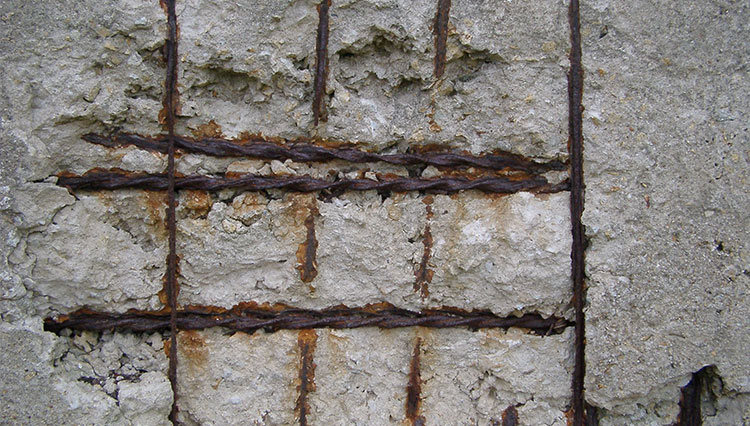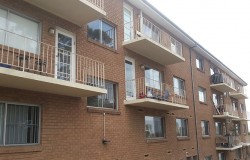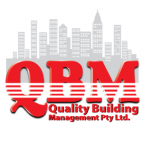Repairing & Budgeting for Concrete Cancer
Strata properties throughout Australia are facing an increasingly serious and costly issue: concrete cancer. Beyond the unsightly look it causes, concrete cancer can also pose significant structural risks to buildings. These risks can potentially endanger lives and lead to significant financial headaches for strata committees and owners alike.
Read on as we look at what concrete cancer is, how to identify it, repair options, preventative strategies, and how to effectively budget for future concrete cancer repairs. At QBM, we specialize in helping stratas navigate building health issues like concrete cancer through thorough inspections and expert advice.
What is Concrete Cancer?
Concrete cancer is the common term for the cracking, spalling, and deterioration of concrete caused by the rusting of the internal steel reinforcement. It’s more than just an eyesore—it’s an issue that can compromise the structural integrity of a building if left untreated.
The root cause? Water penetration.
Water seeps into the concrete, reacts with calcium oxide to form calcium hydroxide, which then reacts with carbon dioxide in the air to create calcium carbonate. This chemical transformation creates cracks in the concrete, allowing more water to get in.
When water reaches the steel reinforcement, rust begins to form. As steel rusts, it expands, which puts internal pressure on the surrounding concrete. This causes further cracking, spalling, and a vicious cycle of ongoing damage.
How to Identify Concrete Cancer
Early identification is key to limiting damage and repair costs. Fortunately, there are tell-tale signs that strata property owners and managers can look for:
-
Water seepage through walls or floors
-
White staining or powdery residue on concrete surfaces
-
Calcium stalactites hanging from the underside of concrete slabs
-
Cracks in walls, ceilings, or floors
-
Rust stains are appearing on the surface, especially near cracks
-
Bubbling or blistering render
-
Leaks appearing on internal walls or ceilings
If you notice any of these signs, it’s time to bring in professionals for an inspection. QBM offers comprehensive building condition audits and defect reports to pinpoint concrete cancer and its causes.
Treatments
The approach to repairing concrete cancer depends on the severity and progression of the issue. Here are the key treatment options:
1. Early Intervention: Waterproofing Repairs
If concrete cancer is caught early, before significant structural damage, then the most effective solution is often replacing or repairing the waterproofing membrane. Although this may seem like a large expense, it’s a proactive investment compared to the costs of later structural repairs or even building demolition.
2. Crack Injection
For isolated cracks, an epoxy resin can be injected to seal the concrete and stop water from penetrating further. However, this solution often acts as a temporary fix and may just shift the problem to another area of the concrete if the root cause (usually water ingress) isn’t addressed.
3. Structural Repairs
When the concrete is visibly spalling or chipping, a more invasive repair is needed. The typical repair process involves:
-
Removing all loose and damaged concrete
-
Exposing the corroded steel reinforcement
-
Cleaning and treating the steel with a rust inhibitor
-
Patching the area with a structural mortar or epoxy material
-
Replacing the waterproofing membrane as needed
Each repair must match the structural load requirements of the area to ensure building safety.
Preventing Concrete Cancer
As with most building maintenance issues, prevention is far more cost-effective than cure.
1. Maintain Waterproofing
Routine maintenance and timely replacement of waterproofing membranes are essential. If membranes are damaged or aged, water will find its way in, starting the process of concrete cancer.
2. Monitor High-Risk Areas
Underground car parks are particularly vulnerable. External basement walls are often designed as “wet walls,” meaning that water is expected to pass through them. Over time, this exposes steel reinforcement to moisture, especially when hydrostatic pressure forces water through the structure.
Currently, there is no guaranteed method to fully seal these walls from hydrostatic pressure. As a result, proactive inspections and budgeting for future repairs in these areas are crucial.
3. Regular Condition Audits
Condition audits by building consultants like QBM help strata communities stay ahead of potential issues. These inspections can identify problem areas early and provide a roadmap for ongoing maintenance and budgeting.
Budgeting for Concrete Cancer Repairs
One of the most overlooked but critical parts of managing a strata property is budgeting for major repairs. Here’s how to stay prepared:
1. Start with a Condition Audit
A comprehensive condition audit provides a baseline understanding of your building’s health. It identifies existing damage, vulnerable areas, and upcoming maintenance needs.
2. Assess the Waterproofing
Carefully evaluate the condition of all waterproofing membranes throughout the property. These membranes play a critical role in preventing water damage and protecting the structural integrity of the building. Attention should be given to high-risk areas such as balconies and rooftops. If membranes are aging, damaged, or missing altogether, they should be prioritised in maintenance planning to prevent future issues such as water penetration and concrete cancer.
3. Update the Sinking Fund
Your sinking fund should be updated to reflect the findings from your condition audit. It must include allocations for:
-
Waterproofing replacements
-
Structural repairs to concrete
-
Future treatments for high-risk areas like basement walls
Sinking funds that are under-resourced may leave owners facing special levies or emergency assessments, which are often unpopular and stressful.
Contact QBM Today
Concrete cancer is a growing concern for strata properties across Australia. It’s not just about aesthetics—it’s about structural safety, long-term asset value, and financial stability.
At QBM, we help our clients tackle concrete cancer head-on through expert building inspections, condition audits, and sinking fund forecasting. Whether you’re in the early stages of identifying water ingress or already dealing with concrete spalling, our team is here to support you through the process, from diagnosis to budgeting and repairs.
Don’t wait for the cracks to get worse. Contact QBM today to schedule your building assessment and get ahead of concrete cancer.






